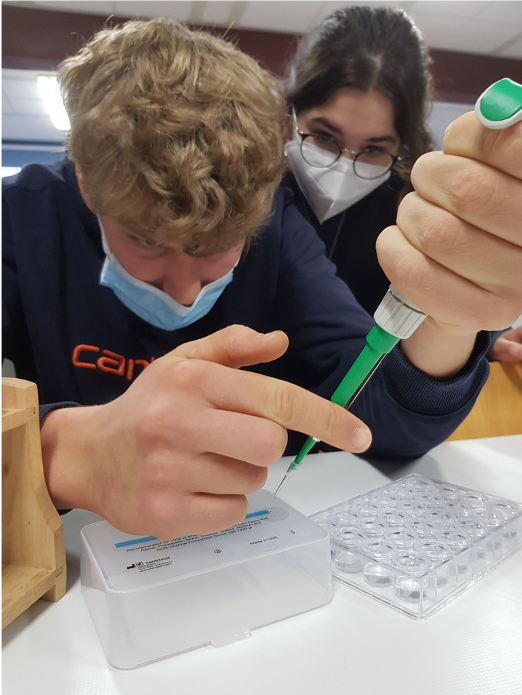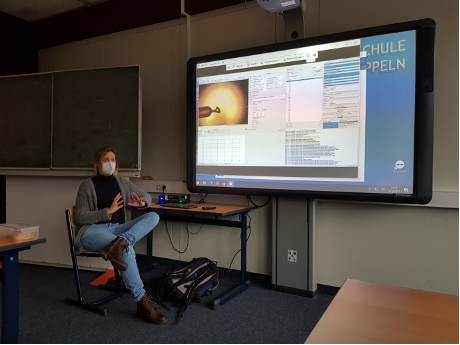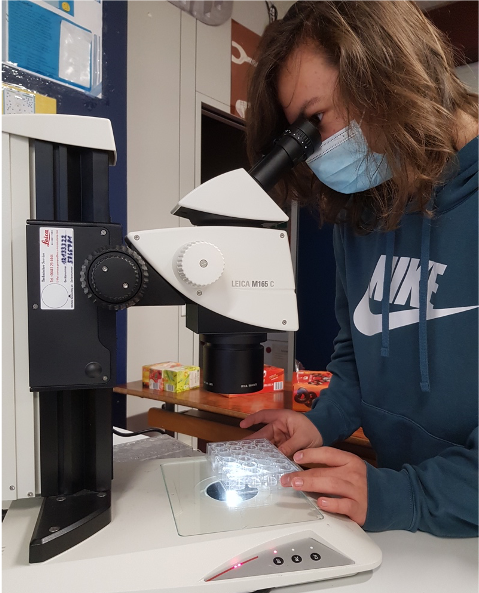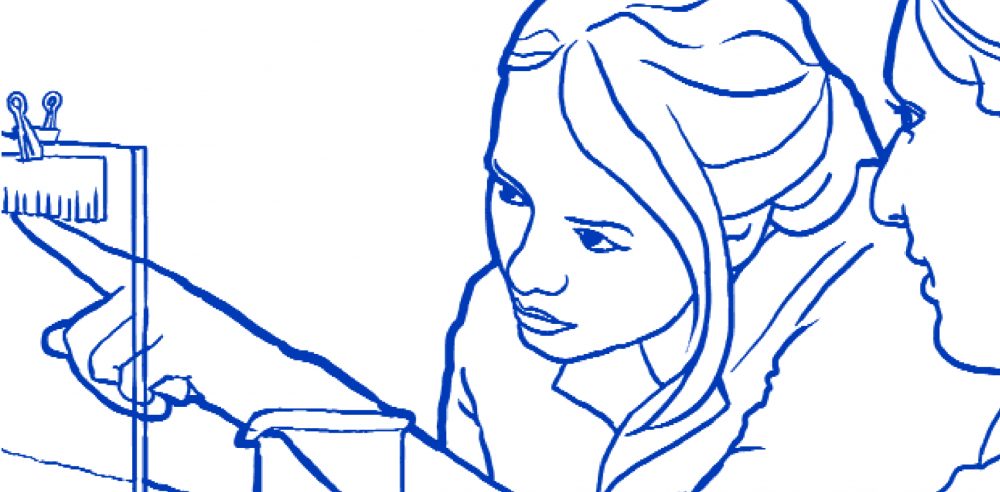EMBL School Ambassador Selina Storm
Country: Germany
Diary
13th December 2021, visit to Secondary School Klaus Harms Schule Kappeln, Germany
The school I went to as a teenager is situated in a rural area nearly 50 km away from the next university and does not even have a train station. The life of a scientist is something I only knew from books, never knowing whether this would be pure fiction or close to reality. This was something I wanted to change for today’s students in my alma mater, so I contacted my former maths teacher and eventually ended up in front of 10 students who have chosen focus on natural sciences.
In addition to telling them about the life of a scientist, I wanted to introduce them to the beautiful world of protein crystallography. I first gave a talk which outlined why and how scientists crystallize proteins after which the students got to do their first experiment: writing their initials with two different pipettes and coloured water onto paper towels.
Their newly acquired skill with pipettes were then put to use in a crystallization experiment. Here the students pipetted different prepared solutions and mixed 2ul of the ready-to use mother liquor with a solution of hen-egg white lysozyme to produce their first protein crystals. While waiting for the crystals to appear, we managed after a few attempts to connect virtually to EMBL Hamburg’s beamline P13. After a demonstration, the students were able to remotely collect X-ray diffraction data on one of the brightest synchrotrons in the world. They collected data on lysozyme crystals, similar to those produced by the students as well as from protein crystals of the main protease of Covid19.
After collecting the data, the students used a microscope from EMBL to investigate their success in crystallizing. Nearly all experiments were successful – well done!
At the end of the day, I told the students a little more about my life as a scientist and my career path, which started 15 years ago at this school. Some of the students already had a clear idea about their future plans and were very eager to learn about what can be accomplished in the world of science as well as about taking the first steps. For me, it was a very rewarding experience – as I explained what excites me about science, and demonstrated that a scientific career can also start in a small city far away from the nearest university.
I would like to thank the teachers Olav Binder and Meika Tuouda for their support, Gunnar van Lindt for establishing the contact and Shweta Gaikwad from ELLS for her help in preparing the visit.




